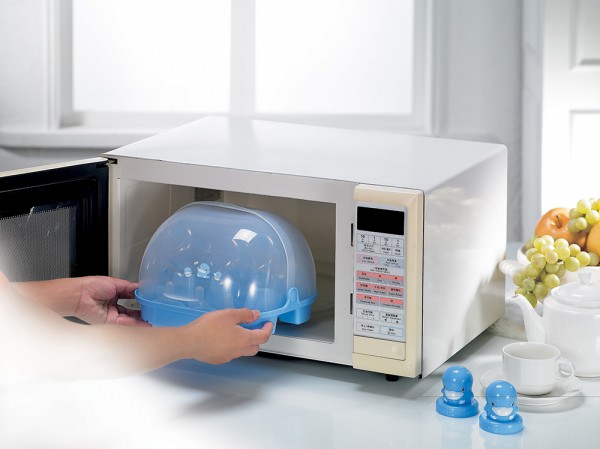Can you microwave milk? The answer to this question is a little more complicated than a simple yes or no. In general, it is safe to microwave milk as long as you take certain precautions. However, some types of milk should not be microwaved. In this blog post, we will explore the different ways to microwave milk and discuss the pros and cons of each method. After reading this post, we hope you will better understand how to safely microwave milk.

Can You Microwave Milk
Absolutely yes, you can microwave milk! Just make sure to do it carefully to avoid scalding. According to the United States Department of Agriculture (USDA), milk can be microwaved without affecting its nutritional value. The USDA also recommends that milk be heated to no more than 165 degrees Fahrenheit to prevent scalding.
To heat milk in the microwave, start by pouring the milk into a microwave-safe container. Then, place the container in the microwave and heat it high for 30 seconds. After 30 seconds, remove the milk and check the temperature. If the milk is not hot enough, return it to the microwave and heat for an additional 15 seconds. Repeat this process until the milk reaches the desired temperature.
When microwaving milk, be sure to use a specifically designed container for microwave use. Do not use a metal container, which can cause the milk to heat unevenly and create hot spots. Hot spots can scald the milk and make it unsafe to consume.
If you are heating milk for a baby, be especially careful to avoid hot spots. Use a bottle warmer or warm the milk slowly in a pan of water to prevent scalding.
Now that we’ve answered the question, “Can You Heat Milk in The Microwave?” let’s explore some different ways to do it.
Is It Safe to Heat Milk in the Microwave?
Yes, it is safe to heat milk in the microwave if you take certain precautions. However, some types of milk should not be microwaved.
Does Microwaving Milk Kill Nutrients?

“Our study reveals that milk heat treatment in household microwave ovens does not alter vitamins A, E, Bj, B2, and B6.” According to research published in the Journal of Dairy Research on the Effects of Microwave Heating on Vitamins A, E, Bj, B2, and B6 in Milk (2018).
A study was published in the US National Library of Medicine (https://pubmed.ncbi.nlm.nih.gov/11929283/) regarding milk mineral balance when heated with microwave energy. The researchers stated that “microwave heating was no more dangerous to the milk than traditional heating” (Presseurop).
How Long does it Take to Warm Milk in the Microwave?
It usually takes about 30 seconds to warm milk in the microwave. However, this will vary depending on the power of your microwave and the amount of milk you are heating.
The Benefits of Microwave Milk
You might be surprised to learn that microwave milk can have some significant benefits. For one thing, it’s much faster than traditional methods. If you’re in a hurry, microwaving milk can be a real time-saver.
Additionally, microwave milk is often less likely to scorch or boil over. And because microwaves heat milk more evenly than stovetops, you’ll often end up with a smoother, more consistent final product.
So if you’re looking for a quick and convenient way to make milk, don’t overlook the microwave. With just a few simple steps, you can enjoy all the benefits of microwave milk.
How do I Know If My Milk is Too Hot?
The best way to know if your milk is too hot is to use a food thermometer. Insert the thermometer into the center of the milk and check the temperature. Milk should be heated to no more than 165 degrees Fahrenheit to prevent scalding.
If the milk is for a kid, careful stirring is required since hotspots might be pretty harmful. Due to uneven heat distribution, milk that has been microwaved has the potential to cause hot spots and burn a child’s mouth.
Because of this, it should be allowed to cool for approximately half a minute before stirring again and ensuring the correct temperature.
Different Ways to Microwave Milk
There are a few different ways that you can microwave milk. The method you choose will depend on your personal preferences and the type of milk you are using.
- If you are using whole milk, skim milk or any other type of milk that contains fat, you can heat the milk in the microwave using the high-power setting. Whole milk will take longer to heat than skim milk, so adjust your heating time accordingly.
- If you are using non-fat or soy milk, you should use the low power setting on your microwave. Non-fat milk and soy milk tend to scorch easily, so it is essential to heat them slowly to prevent burning.
- Another way to microwave milk is to heat it in a saucepan on the stove. This method is best for heating large quantities of milk at one time. To heat milk on the stove, pour it into a saucepan and place it over medium heat. Heat the milk until it reaches the desired temperature, occasionally stirring to prevent scorching.
Which Method is Best?
There is no right or wrong answer when choosing a method for microwaving milk. It is simply a matter of personal preference. Some people prefer to use the microwave because it is quick and convenient.
Others prefer the stovetop method because it allows them to control the heating process better. Experiment with both ways and see which one works best for you.
Additional Tips for Microwaving Milk
- Always start with cold milk. Room temperature milk will scorch more quickly than cold milk.
- Use a microwave-safe container. Do not use a metal container, as this can cause the milk to heat unevenly and create hot spots.
- Heat the milk on high power for 30 seconds, then remove and check the temperature. If the milk is not hot enough, return it to the microwave and heat for an additional 15 seconds. Repeat this process until the milk reaches the desired temperature.
- Stir the milk every 15 seconds while it is heating to prevent scorching.
- If you are heating milk for a baby, be especially careful to avoid hot spots. Use a bottle warmer or warm the milk slowly in a pan of water to prevent scalding.
- No power level. Use the defrost setting. If you don’t see a power option on your microwave, choose to defrost since it will automatically reduce your power.
- When heating milk in a microwave, use 50% power. This will enable the milk to heat evenly and avoid reaching its boiling point.
Read more:
How to Store Milk
Milk is a staple in many kitchens but can be tricky to store. If milk is not stored correctly, it can spoil quickly, making it unsafe to consume.
The key to storing milk successfully is to keep it cold. Milk should be stored in the refrigerator at 40 degrees Fahrenheit or below. If milk is stored at a too warm temperature, bacteria can grow and cause the milk to spoil. When storing milk in a fridge, place it on the shelf closest to the back, where the temperature is coolest.
It is also important to keep milk away from strong-smelling foods, as it can absorb their odors. Once the milk has been opened, it should be used within a few days. To extend its shelf life, milk can be frozen, although this may change its texture. When thawing frozen milk, it is important to do so slowly in the refrigerator.
Milk should also be covered or sealed to prevent contact with air, which can cause it to sour.
Following these simple tips, you can keep your milk fresh and enjoy it for weeks.
FAQs

Q. Can I Microwave Milk in a Glass Container?
A. Yes, you can microwave milk in a glass container. However, it is important to choose a microwave-safe container. If you are unsure whether or not your content is safe to use, check the manufacturer’s instructions.
Q. Can I Add Flavouring to My Milk Before Microwaving It?
A. Yes, you can add flavoring to your milk before microwaving it. However, use a non-reactive flavoring agent, such as vanilla extract. Do not use chocolate or other reactive flavors, as they can cause the milk to scorch.
Q. Can I Reheat Milk that Has Already Been Heated in the Microwave?
A. Yes, you can reheat milk that has already been heated in the microwave. However, stir the milk well before reheating it to ensure even heating. You should also heat the milk on a lower power setting to prevent scorching.
Q. Can I Microwave Frozen Milk?
A. Yes, you can microwave frozen milk. However, it is important to thaw the milk entirely before microwaving it. To thaw frozen milk, place it in the refrigerator for several hours or overnight. Do not thaw milk at room temperature, as this can cause bacteria to grow. Once the milk is thawed, heat it in the microwave using the low power setting until it reaches the desired temperature.
Q. Can You Microwave the Milk for a Latte?
A. Yes, you can microwave the milk for a latte. However, it is essential to choose milk that will froth well. Whole milk or 2% milk are both excellent choices. Use a steaming wand to froth the milk before adding it to your coffee for best results.
Q. Can I Microwave Milk Kefir?
A. Yes, you can microwave Milk Kefir. However, use low power and heat the Kefir for short intervals to prevent scorching. It is also important to stir the Kefir frequently while it is heating.
Q. How Can I Steam Milk Without a Machine?
A. You can steam milk without a machine by using the microwave. To steam milk in the microwave, please place it in a microwave-safe container and heat it on high power for 30 seconds. Remove the milk from the microwave and check the temperature. If the milk is not hot enough, return it to the microwave and heat for an additional 15 seconds. Repeat this process until the milk reaches the desired temperature.
Q. Can I Make Hot Chocolate in the Microwave?
A. Yes, you can make hot chocolate in the microwave. However, use a non-reactive flavoring agent, such as vanilla extract. Do not use chocolate or other reactive flavors, as they can cause the milk to scorch.
You may like: Best microwave air fryer combo reviews [Update 2022]
Conclusion
Now that we’ve answered the question, “Can you microwave milk?” we hope you better understand how to do it. Heating milk in the microwave is quick and convenient, but it is important to be careful and avoid scorching. Use these tips to help you get the best results.
- How Long To Bake Salmon At 425 in Foil? - December 11, 2022
- How Long To Cook Chuck Roast In Oven At 350? - December 11, 2022
- How Many Chicken Wings Are In A Pound? - November 26, 2022
